Canberra: A Meeting Place for Learning and Exploration
MERCY LIGHT: LEARNING
MERCY LIGHT: LEARNING
Did you know that the first Australian-made currency was crafted by a convict of Spanish coins? Or that the name ‘Canberra’ means ‘meeting place’ in Ngunnawal language?
These are just two interesting facts that some of our Year 7 students have enjoyed discovering during the week visiting Australia’s capital city.
The Year 7 visit to Canberra has been a highly anticipated experience in the calendar at SAC for many years, but due to the pandemic, this has been the first time since 2019 that a group from the College has been able to visit.
The itinerary for the week is filled with engaging curriculum-based and exploratory activities that deepen students’ understanding of Australia’s rich and varied cultural history. During their time in Canberra, students visit historical landmarks including Parliament House, the Museum of Australian Democracy, National Gallery of Australia, Royal Australian Mint, the National Australian Museum and the Australian War Memorial.
Students enhance their STEM skills through participation in cutting-edge educational programs at the Canberra Deep Space Communications Complex, the CSIRO Discovery Centre, Questacon and have the chance to see beyond our planet at the Mount Stromlo Observatory.
The trip is also peppered with leisurely activities such as a visit to the National Zoo and Aquarium, a tour of the Australian National Botanic Gardens, and a movie night at Canberra Park. These activities help the students to debrief with each other about what they’ve seen and learnt, and to connect and have fun with one another.
For Year 7 student, Isabella, a visit to Parliament House on day one of the trip did not disappoint:
“I was most excited for Parliament House, I couldn’t wait to see where laws are made. I learnt about the proper way to vote in Australian elections and now I know not to tick the boxes [on the voting ballot] when it asks for numbers!”
Learning about citizenship is a pillar of the Australian curriculum and is underpinned by three components: civil rights and responsibilities, political participation and representation and the importance of our diversity and shared values which support social cohesion and democracy.
Australians enjoy living in a democracy, and many students who return from Canberra express feelings of gratitude for this, and for having had the chance to learn about Australia’s political systems and history in their first year of secondary education.










On day two, a visit to the National Gallery of Australia allowed space and time for students to interpret some of our country’s greatest works of art and the artists who created them.
Students appreciated learning about Aboriginal and Torres Strait Islander art and the culture of the artists. Harper enjoyed “learning that art doesn’t always take the form of a painting and can take many different forms.”
“My favourite artwork was Blue Poles by Jackson Pollock because I could see the emotion in his work. It’s a great experience to have and I have loved learning new things along the way,” Harper said.
A visit to the Australian War Memorial on the final day of the trip was a time of deep reflection for the Year 7s, when they paused to consider the contributions of Australia’s armed forces in serving the people of their country. It’s a poignant reminder of the sacrifices that others have made so that Australians today can be, “one and free”, as our National Anthem reminds us.
The trip to Canberra plants seeds of knowledge and curiosity in the hearts and minds of Year 7s. These will help them to bloom as people of courage, service, creativity and innovation, and to become a generation of strong leaders.
Ms Maddie Kelly
Marketing & Communications Team









